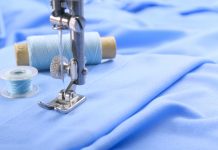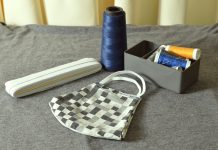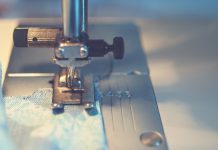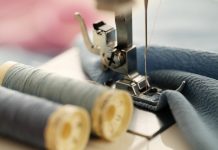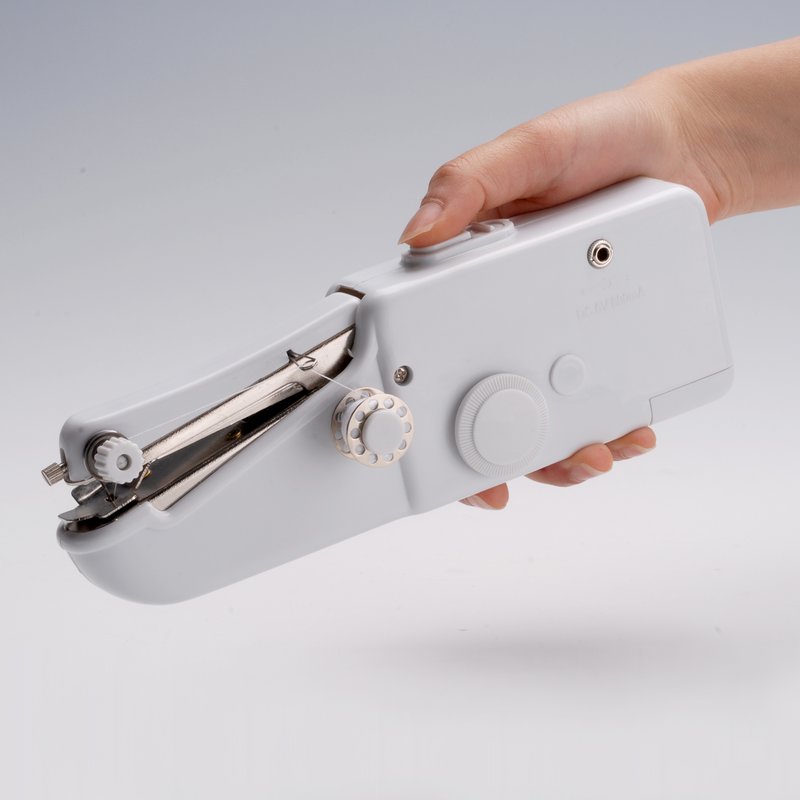When choosing between a mechanical and a computerized sewing machine, everyone has their own opinion on the superior option. The truth is there are advantages and disadvantages to both.
Most people learn to sew on a standard mechanical sewing machine, which partially explains their popularity. Computerized sewing machines have only been available for a relatively short time, which is why so few people are familiar with them.
To help you better understand these advanced and convenient newcomers, let’s take a look at how to operate a computerized sewing machine. Before we explain how to use a computerized sewing machine, we’ll cover some of their benefits and break down how they differ from mechanical sewing machines.
By listing their benefits and explaining the proper way to use them, we hope to clear up some of the confusion about computerized sewing machines and that you will gain an appreciation for how easy they are to use and how convenient they can be.
 Mechanical vs. Computerized Sewing Machines
Mechanical vs. Computerized Sewing Machines
Before we explain how to use a computerized sewing machine, it is worth learning how they differ from the more typical mechanical sewing machines.
Mechanical Sewing Machines:
Mechanical sewing machines use a straightforward, geared motor topstitch thread. With almost every mechanical sewing machine, you control the needle speed with a foot pedal.
Changes in stitch style, length, width, and everything else are controlled by manually turning dials to pre-set selections. The user controls the thread tension and makes other adjustments using exterior dials. In other words, the sewing machine doesn’t do anything automatically.
While this can mean that the user has a greater sense of control and a more tactile sewing experience, the low-tech, simplistic design means operating them can be more work. The way mechanical sewing machines work has not changed in any significant way in several decades.
Computerized Sewing Machines:
Computerized sewing machines use more advanced computer technology to automate many of the actions performed manually on a mechanical sewing machine. Everything from the needle speed to the thread tension is controlled by the sewing machine’s internal computer system.
Because much of the stitch work is controlled by a computer, computerized sewing machines can easily create hundreds of decorative stitches and a wide variety of convenient utility stitches. More advanced computerized sewing machines come equipped with pre-programmed embroidery designs, including letters, geometric shapes, and more.
Most computerized sewing machines are also compatible with digital embroidery design programs, which means the user can create their designs on a computer and then transfer that newly created design to the machine. Their ability to produce countless designs at just the touch of a few buttons makes computerized machines incredibly convenient and easy to work with.
What are the Benefits of Using a Computerized Sewing Machine?
They Are Much Easier for Beginners to Use:
Computerized sewing machines are all about convenience and user-friendliness. Mechanical sewing machines require practice and training to gain the experience necessary to produce high-quality stitch work, but computerized sewing machines produce stunning results, even when someone with little sewing experience operates them.
Computerized Sewing Machines Save You Time and Frustration:
The automation of a computerized sewing machine is great for those with little in the way of sewing experience, but it is useful and time-saving for those with experience, too. Rather than wasting time fine-tuning settings manually, the machine sets everything itself. Tension is automatically adjusted to accommodate new stitch settings, so the user can create perfect stitches with little more than the press of a button.
Computerized Machines are Incredibly Versatile:
Computerized sewing machines come equipped with a wide variety of stitch and embroidery settings. Using a computerized machine, you can easily create stitches that would be nearly impossible to replicate using a mechanical sewing machine.
Features, such as automatic buttonhole making, can be selected in seconds. You can go from hemming to sewing buttons faster than would ever be possible using a mechanical device. Once the user is familiar with their computerized sewing machine, they can complete a variety of sewing tasks without needing to tinker with their machine.
How to Use a Computerized Sewing Machine
While computerized sewing machines automate many of the processes you would have to adjust by hand with a mechanical machine, they still require some level of experience. You should always read the instruction manual, but the following breakdown explains the basics of using a computerized sewing machine.
Setting up the Machine:
Before you get started, connect the power cable and the foot pedal to the machine. As you would with any sewing machine, it is a good idea to place it on a solid table that is clear from clutter.
Threading the Machine:
Setting up the thread for your computerized sewing machine can be broken down into the following steps:
- Bobbin threading: Start by inserting the thread into the spool pin and then pull it and lead it through the bobbin winding tension disc. Bring the thread back to the bobbin and insert it through one of the side holes. From there, wrap it around several times, then insert the bobbin into its pin.
- Upper section threading: Take the thread that is in the spool pin and pass it through all of the guides and tensioning discs. Most machines feature automatic needle threading, so this process should be straightforward.
- Lower section threading: The final step is threading the lower half, which involves putting the bobbin into place. Some machines have top-loading bobbins, while others have front-loading bobbins. Whichever way your machine is designed, fix it in place, and expose the thread by passing it through the notch guides.
Selecting a Stitch Type:
Choosing a stitch type is where computerized machines differ from the more basic mechanical sewing machines. Rather than using dials, you use buttons and even a touchscreen LCD for stitch selection.
Making selections and inputting commands should be fairly straightforward, as most companies intentionally design their computerized sewing machines to be as intuitive as possible.
Simply select your desired stitch pattern, and the sewing machine does the rest. Many computerized sewing machines can be connected directly to a laptop, making it even easier to browse the options and make the correct decision.
Fine-tuning, such as making stitch width and length selections, is done quickly using the buttons or touchscreen.
Selecting Other Features:
Computerized machines have plenty of convenience features, such as pace selectors and pre-set embroidery patterns. Each machine has a different way to access these settings. The best way to learn how your machine operates is to read the instruction manual. Many computerized sewing machine manufacturers even have online tutorial videos that break down how you can get the most out of your new machine.

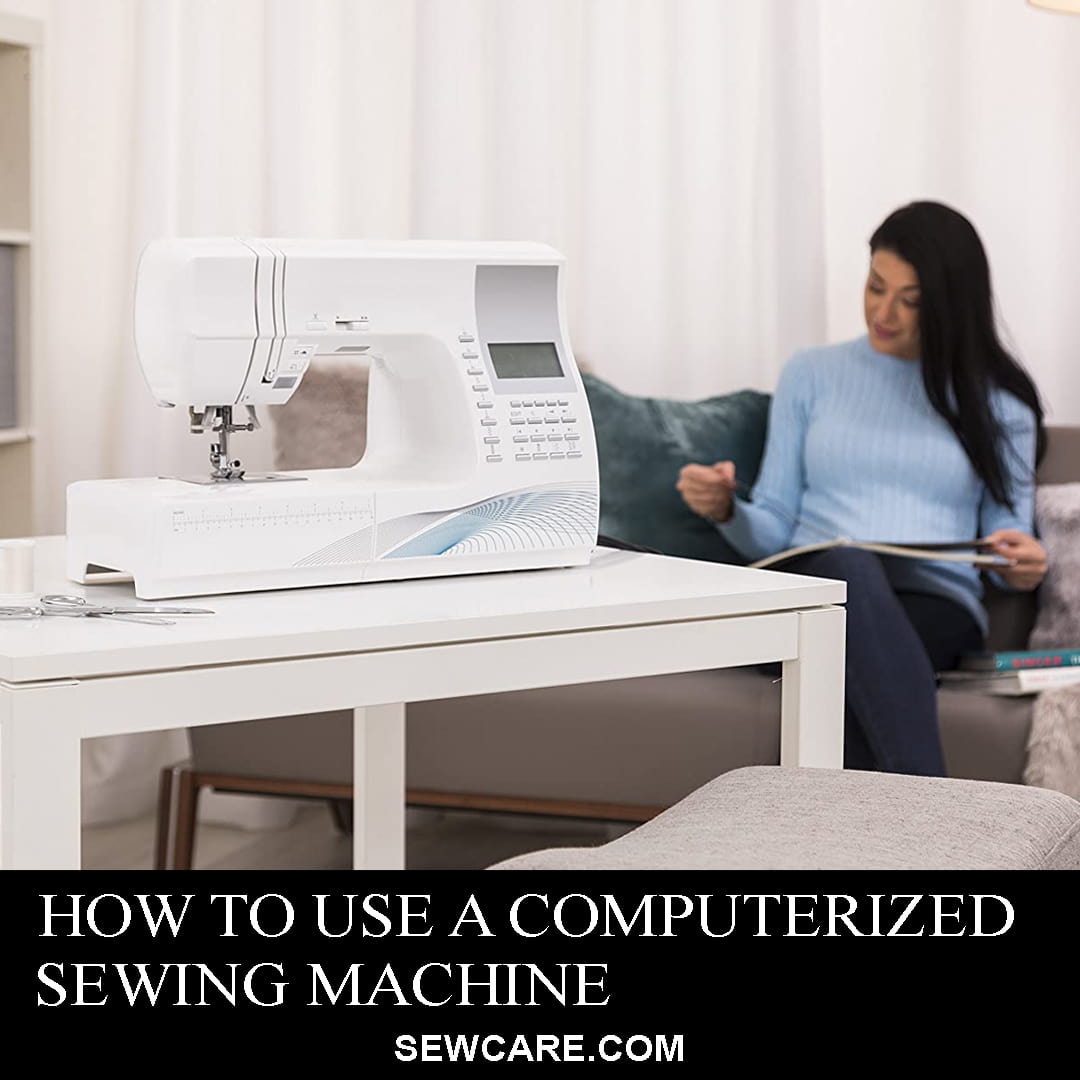 Mechanical vs. Computerized Sewing Machines
Mechanical vs. Computerized Sewing Machines